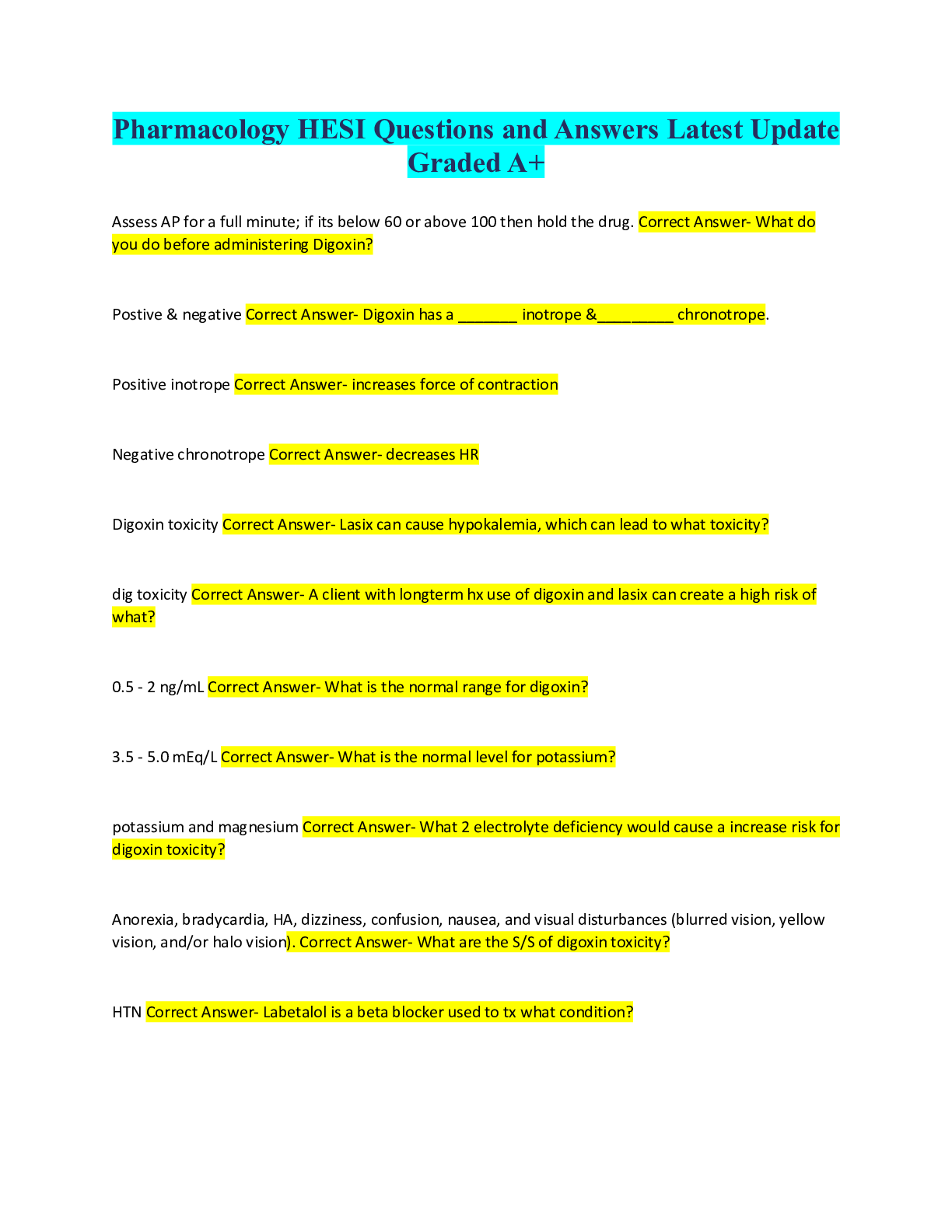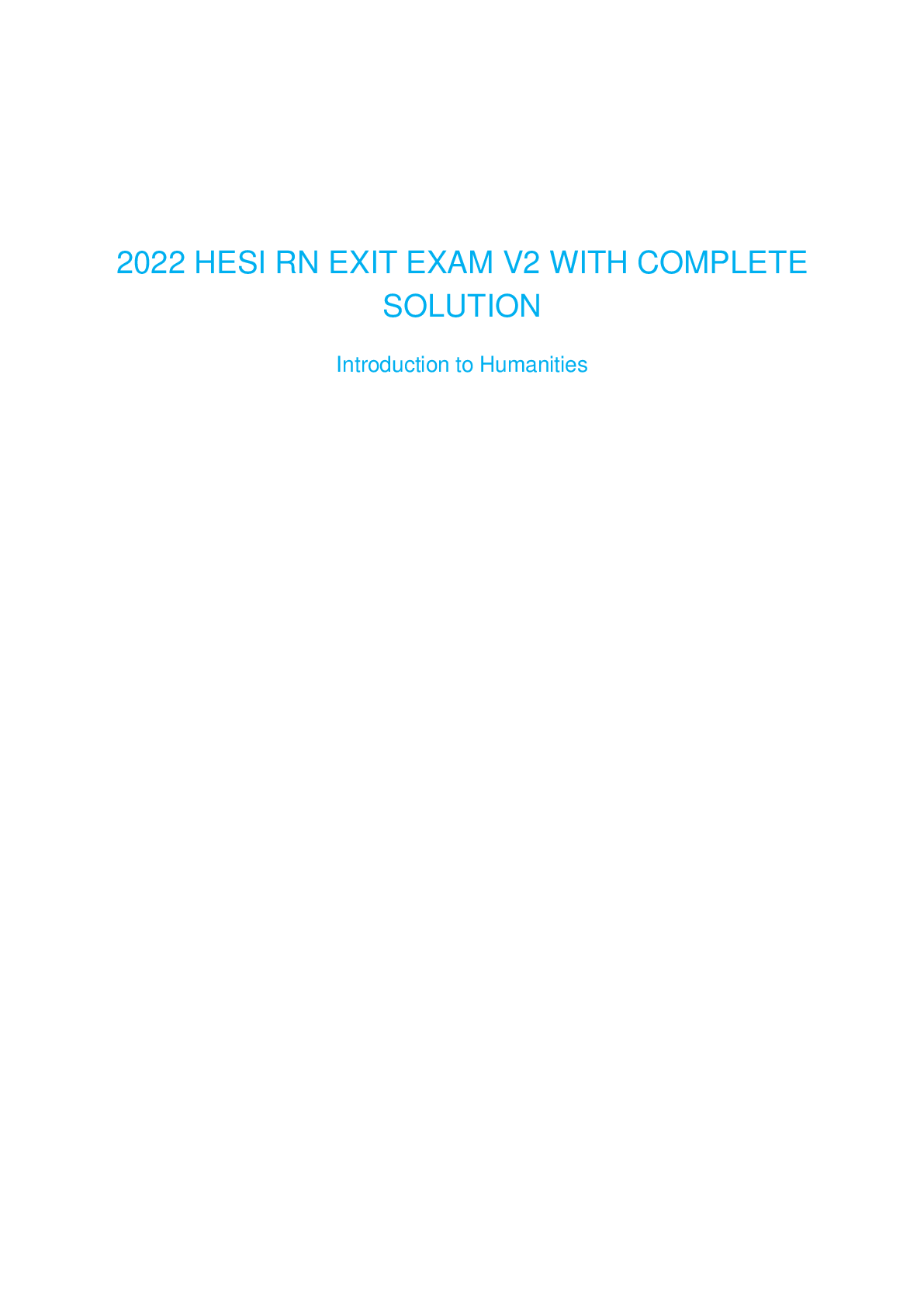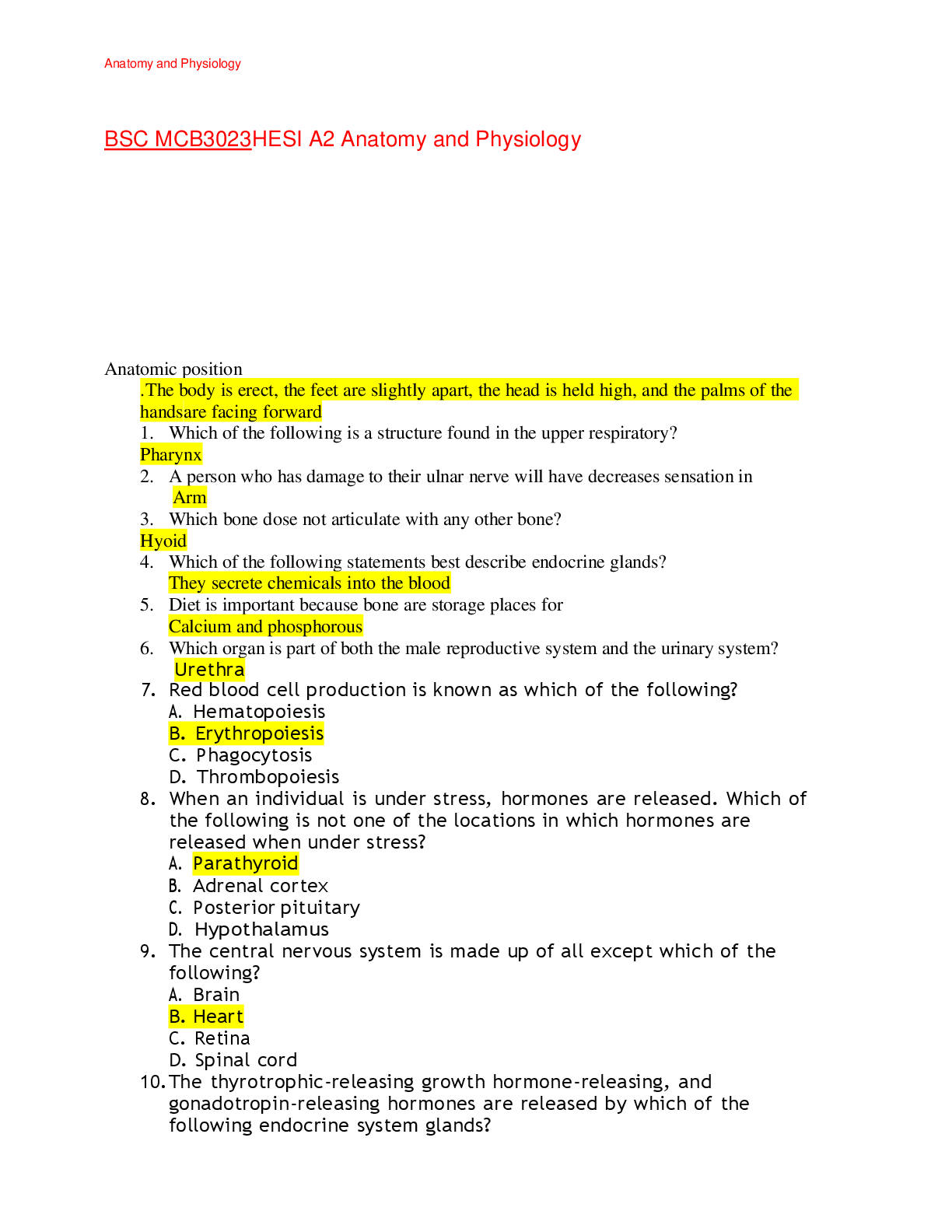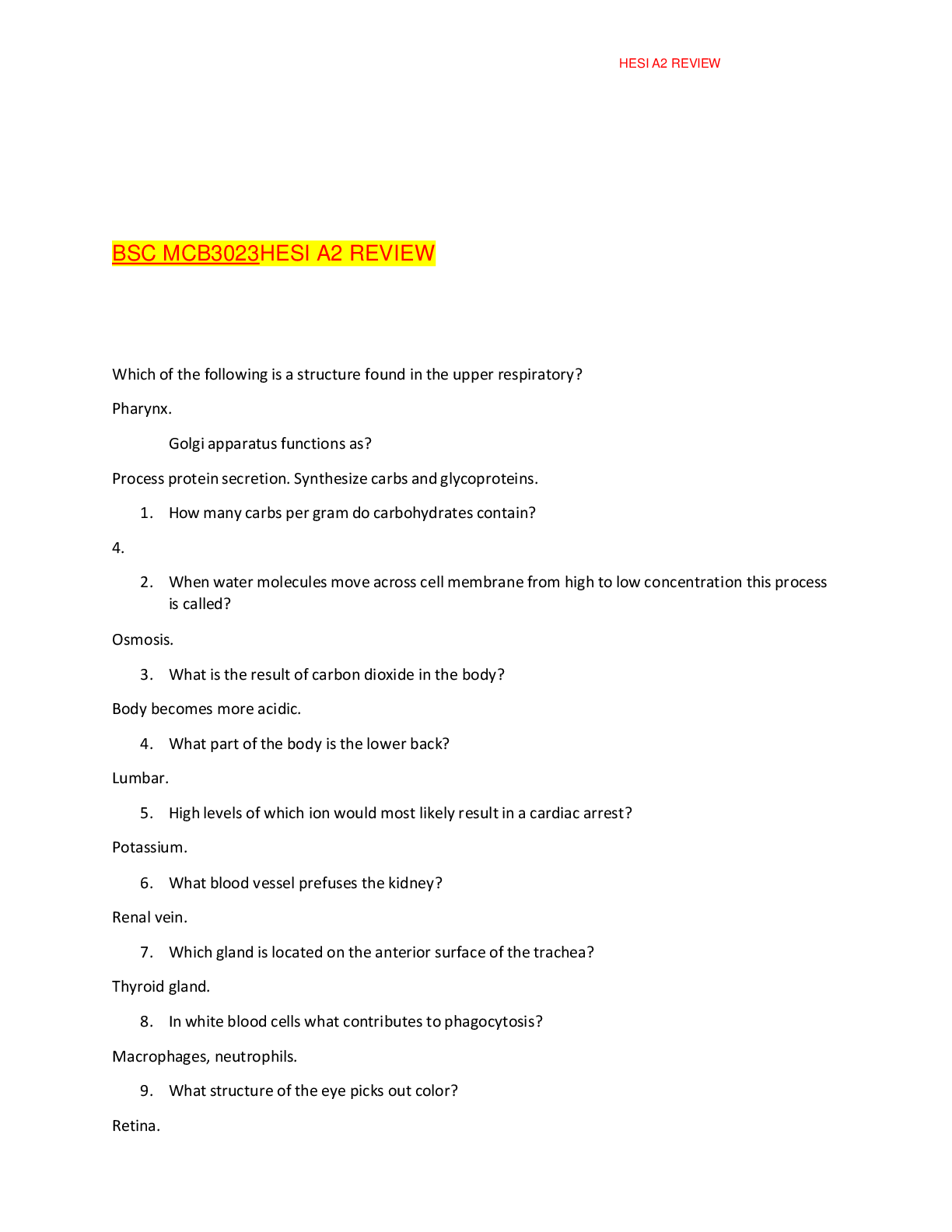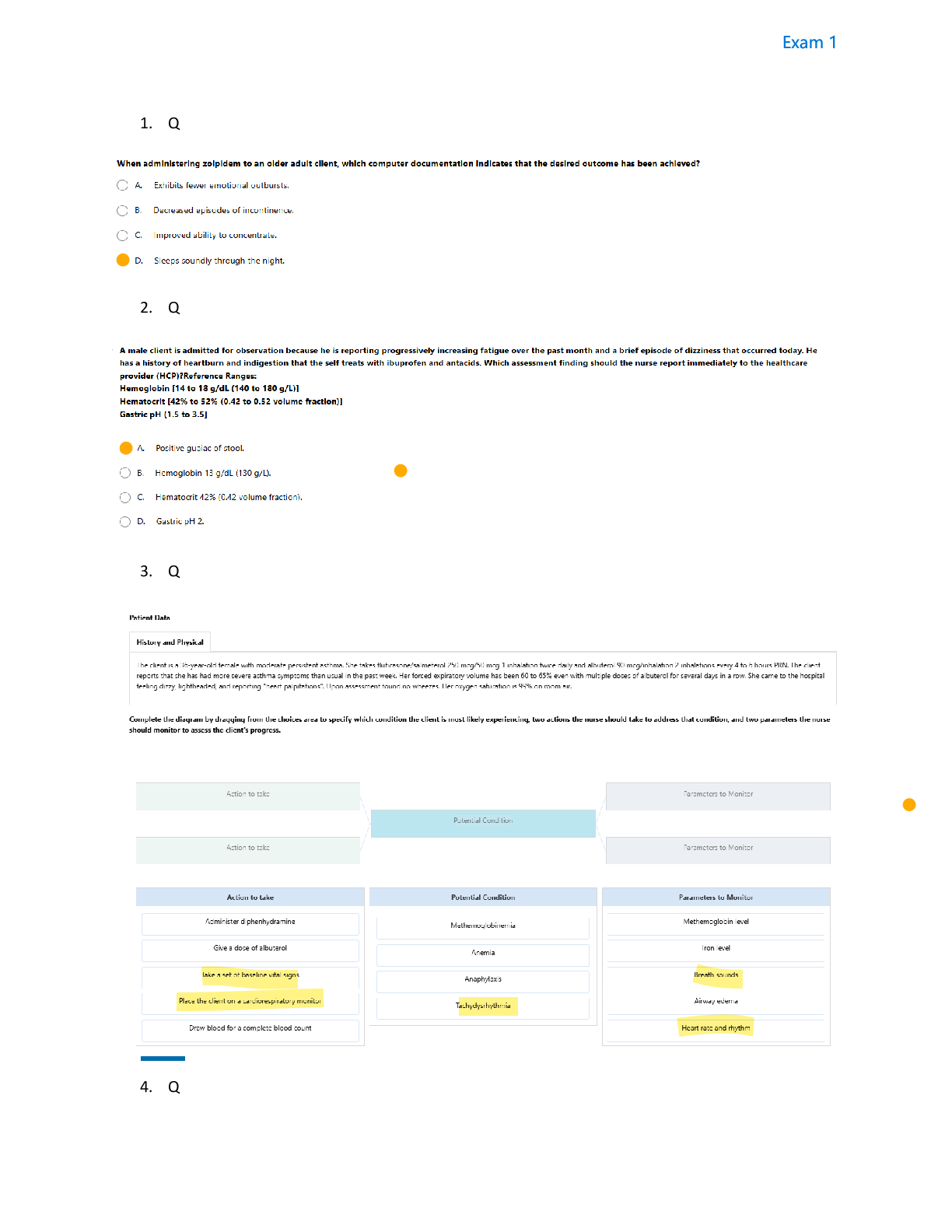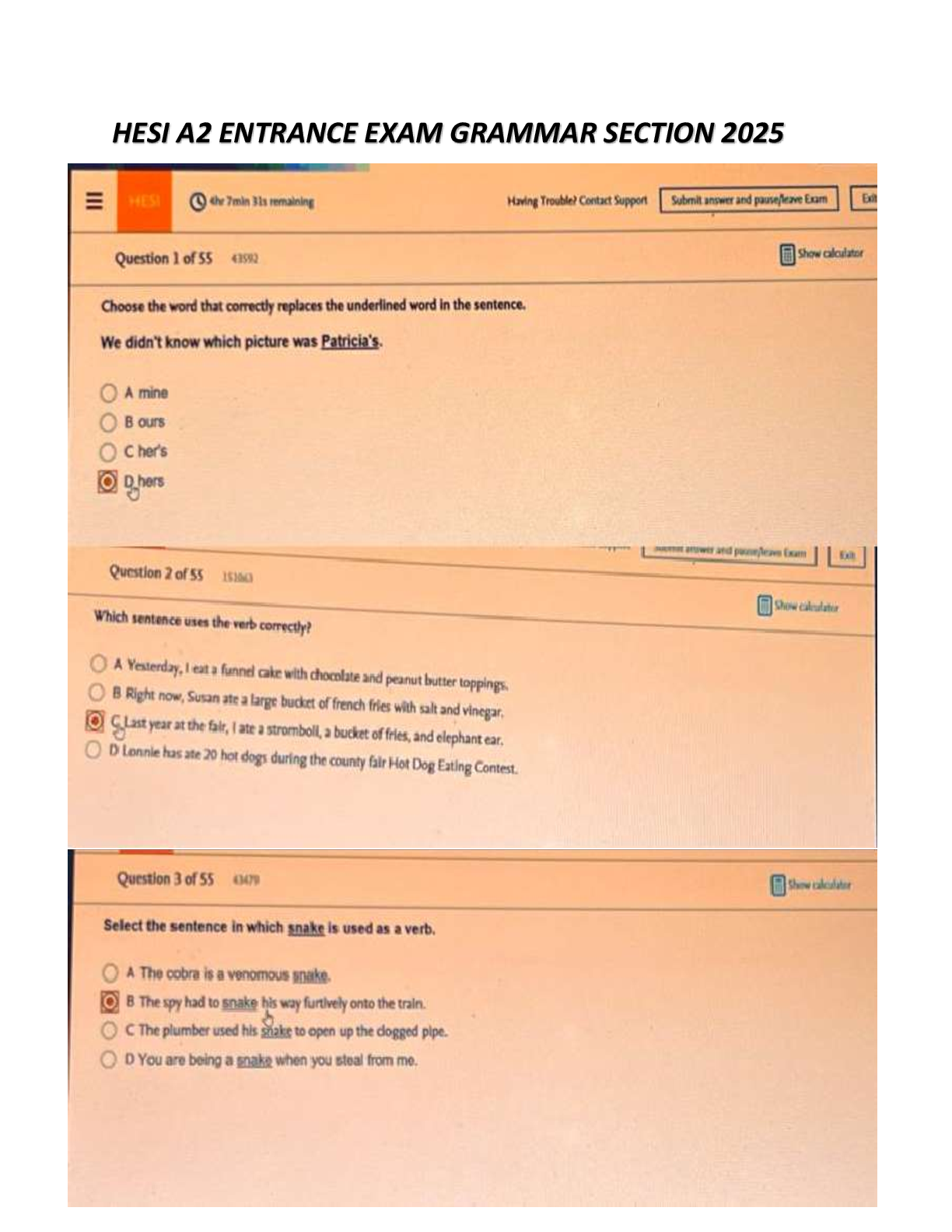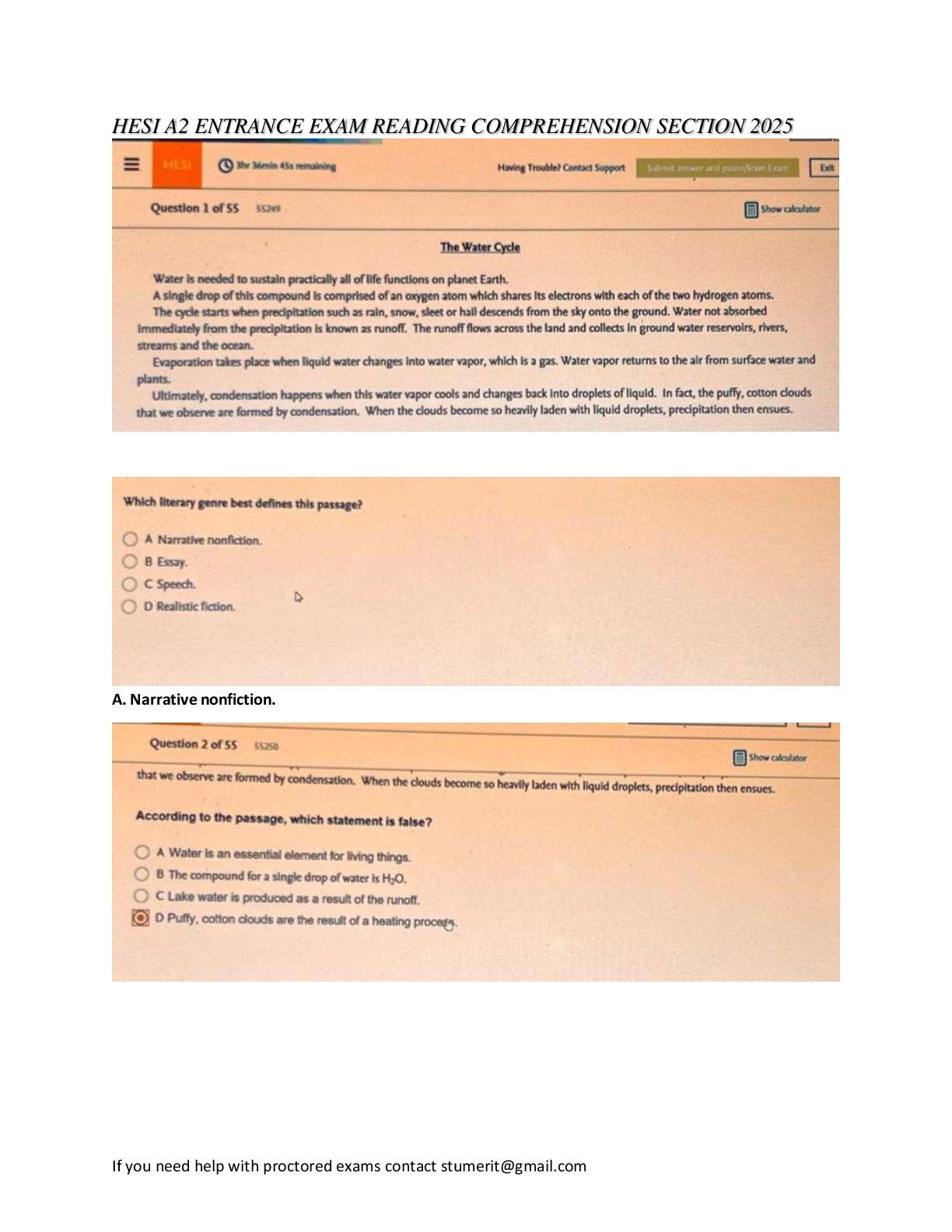*NURSING > HESI > OB/Peds Nursing_knowledge_Assessment_Practice_Exam Practice Questions and answers. Rationale explana (All)
OB/Peds Nursing_knowledge_Assessment_Practice_Exam Practice Questions and answers. Rationale explanation provided for each answer. 20 pages
Document Content and Description Below
OB/Peds HESI Practice Questions and answers. Rationale explanation provided for each answer. 20 pages The RN is monitoring an infant with CHD closely for SSx of HF. The RN should assess the infant ... for which early sign of HF? 1.Pallor 2.Cough 3.Tachycardia 4.Slow and shallow breathing - 3. tachycardia RATIONALE: HF is the inability of the heart to pump a sufficient amt of blood to meet the O2 and metabolic needs of the body. The early SSx of HF include tachycardia, tachypnea, profuse scalp sweating, fatigue & irritability, sudden weight gain, and resp distress. A cough may occur in HF as a result of mucosal swelling & irritation, but is not an early sign. Pallor may be noted in an infant w/ HF, but is not an early sign. The nurse reviews the laboratory results for a child with a suspected diagnosis of rheumatic fever, knowing that which laboratory study would assist in confirming the diagnosis? 1.Immunoglobulin 2.Red blood cell count 3.White blood cell count 4.Anti-streptolysin O titer - 4. anti-streptolysin O titer RATIONALE:Rheumatic fever is an inflammatory autoimmune disease that affects the CT of the heart, joints, skin (SQ tissues), BV, and CNS. A Dx of rheumatic fever is confirmed by the presence of 2 major manifestations or 1 major and 2 minor manifestations from the Jones criteria. In addition, evidence of a recent strep infection is confirmed by a + anti-streptolysin O titer, streptozyme assay, or anti-DNase B assay. On assessment of a child admitted with a diagnosis of acute-stage Kawasaki disease, the nurse expects to note which clinical manifestation of the acute stage of the disease? 1.Cracked lips 2.Normal appearance 3.Conjunctival hyperemia 4.Desquamation of the skin - 3. conjunctival hyperemia RATIONALE: Kawasaki disease, aka mucocutaneous lymph node syndrome, is an acute systemic inflammatory illness. In the acute stage, the child has a fever, conjunctival hyperemia, red throat, swollen hands, rash, and enlargement of the cervical lymph nodes. In the subacute stage, cracking lips and fissures, desquamation of the skin on the tips of the fingers and toes, joint pain, cardiac manifestations, and thromobocytosis occur. In the convalescent stage, the child appears normal, but SSx of inflammation may be present The mother of a child being discharged after heart surgery asks the nurse when the child will be able to return to school. Which is the most appropriate response to the mother? 1."The child may return to school in 1 week." 2."The child will not be able to return to school during this academic year." 3."The child may return to school in 1 week but needs to go half-days for the first 2 weeks." 4."The child may return to school in 3 weeks but needs to go half-days for the first few days." - 4. "The child may return to school in 3 weeks but needs to go half-days for the 1st few days" RATIONALE: After heart surgery, the child may be able to return to school in 3 weeks but needs to go half-days for the 1st few days. The mother also should be told that the child cannot participate in PE for 2 months.Prostaglandin E1 is prescribed for a child with transposition of the great arteries. The mother of the child is a registered nurse and asks the nurse why the child needs the medication. What is the most appropriate response to the mother about the action of the medication? 1.Prevents blue (tet) spells 2.Maintains adequate cardiac output 3.Maintains an adequate hormonal level 4.Maintains the position of the great arteries - 2. maintains adequate CO RATIONALE: A child with transposition of the great arteries may receive prostaglandin E1 temporarily to increased blood mixing if systemic and pulmonary mixing is inadequate to maintain adequate CO. The nurse is assessing a newborn with heart failure before administering the prescribed digoxin. In reviewing the laboratory data, the nurse notes that the newborn has a digoxin blood level of 1.6 ng/mL (2.05 mmol/L) and an apical heart rate of 90 beats/min. The mother also tells the nurse that the newborn just vomited her formula. Which intervention should the nurse take? 1.Retake the apical pulse. 2.Administer the medication. 3.Withhold the medication for 1 hour. 4.Withhold the medication and notify the health care provider. - 4. withhold the med and notify HCP RATIONALE: The apical pulse rate for a newborn is 120-160 bpm. The therapeutic dig level is 0.5-0.8. Bc the apical rate is low and the dig blood level is elevated, indicating toxicity, the RN would withhold the med and notify the HCP [Show More]
Last updated: 3 years ago
Preview 1 out of 20 pages
.png)
Buy this document to get the full access instantly
Instant Download Access after purchase
Buy NowInstant download
We Accept:

Reviews( 0 )
$8.00
Can't find what you want? Try our AI powered Search
Document information
Connected school, study & course
About the document
Uploaded On
Jul 25, 2022
Number of pages
20
Written in
All
Additional information
This document has been written for:
Uploaded
Jul 25, 2022
Downloads
0
Views
187

.png)
.png)
.png)
